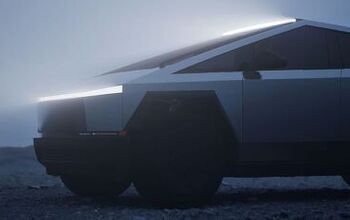Report: Some Automakers Abandoning AM Radio

An acquaintance of mine recently said he would never purchase an all-electric vehicle and offered up a reason I never heard before. “They don’t come with AM radio,” he said.
While this surprised me, shifting technological preferences have indeed started to change how automobiles and broadcasters interact. As an example, a gaggle of Mazda owners found their vehicles stuck tuned to National Public Radio this February after a local station transmitted an FM data packet that effectively froze the cars’ infotainment system amid the swap to next-generation broadband services. That transition has already caused some interesting problems for the industry and electromagnetic interference has likewise become the default explanation for automakers limiting your frequency band choice in certain vehicles. But it doesn’t explain why some companies are ditching AM radio outright. In fact, a little research has shown a lot of the explanations given by manufacturers leave a lot to be desired.
My not-quite friend said he’d come to his realization about AM radio after browsing the all-electric Porsche Taycan and a few Tesla models — none of which offered an AM receiver. Though I was absolutely positive that I’d driven EVs equipped with them in the past and was relatively confident that included at least one Tesla model.
After some light research, I learned that Tesla had actually abandoned AM radio in 2018, citing static from electromagnetic interference created by the electric motors. BMW and Porsche have used similar reasoning for why the feature has been removed from their EVs. But the situation doesn’t appear to be universal, as American manufacturers have retained the option to listen to AM radio on their all-electric products. Interestingly, a lot of the companies that have ditched the 550 to 1720 kHz bandwidth offer alternative ways of listening to AM frequencies. But this typically requires additional expenses. For example, Tesla will allow drivers to tune in if they’re subscribed to its Premium Connectivity service.
While it’s rather curious that a lot of the companies pioneering subscription-based lockouts for already installed features (e.g. BMW now charges customers a subscription for heated seats and steering wheels in certain markets) have streamlined their radio options, it’s absolutely true that AM frequencies do tend to be more vulnerable to electromagnetic interference. Despite being affordable to broadcast on and capable of traveling long distances, AM radio is often accompanied by static and thereby more susceptible to things like storms, nearby power lines, and even solar activity. However, anything that would be strong enough to totally nullify an incoming broadcast is likely to create some problems for your phone and FM radio as well.
Digging deeper resulted in my finding a recent report from The Drive exploring the same issue, that delved into why European manufacturers might be more prone toward dropping AM radio for reasons other than it opening the door for new ways of charging their customers. Noting that Audi, BMW, Porsche, Tesla, and Volvo are now frequently sold without AM radios, the outlet suggested that the format simply isn’t that popular in the EU anymore.
From The Drive:
We contacted all three of Detroit’s giants for why they continue to include AM radios when some European makes have phased them out, but the answer establishes itself across those very same lines. AM radio has fallen out of favor in Europe, with Radio Info reporting in 2015 that stations were shutting down en masse from France to the Netherlands and Russia. The frequency has largely been superseded by the DAB format, which is a more advanced form of radio broadcasting with better audio quality and choice of stations. AM radio stations and their listeners are all but gone in Europe, so European carmakers may not need to include technology that many of its customers can’t use.
In the U.S., on the other hand, radio remains a must for car buyers, with 89 percent of responders in a 2021 survey stating radio should be standard in new cars. That makes radio even more important to U.S. car buyers than USB ports, which only 84 percent said were necessary. AM audiences were in rapid decline as of a 2017 report by Inside Radio, but not to enough a degree for American carmakers to leave AM radios out of their products. It’s not hard to figure out why AM’s holding on here, either: AM signals travel further than FM broadcasts do and are cheaper to transmit, allowing them to cater to audiences in sparsely populated areas. Audio quality can’t compare, but that’s secondary to having anything to listen to at all in some parts of the continental United States.
Having taken more long and lonesome road trips than most, I’ve occasionally turned to AM radio when there’s nothing good on satellite or FM stations and I’ve grown tired of my own personal playlists. Often talk-focused, the older band offers a mix of multilingual news channels, 24-hour weather broadcasts, traffic updates, religious services, political debates, and even the odd pirate station. There are at least 6,000 unique AM broadcasters in operation today compared to the roughly 15,000 commercial outlets that exist on FM frequencies. And that’s perhaps telling of the former spectrum’s dwindling popularity, as is the fact that I hadn’t even realized radio features were being trimmed from newer (usually electric or hybrid) models offered by specific companies until quite recently.
The good news for AM lovers is that most of those channels can still be found on simulcast HD stations or even streamed directly over the internet. So, even if you buy a car that doesn’t come with AM radio, you should still be able to find all but the smallest outlets by other means. Still, there’s a chance some of those weird, ultra-distant, and privately-operated stations will become impossible to find organically — further limiting the overall reach of AM radio over time.
[Image: Virrage Images/Shutterstock]

A staunch consumer advocate tracking industry trends and regulation. Before joining TTAC, Matt spent a decade working for marketing and research firms based in NYC. Clients included several of the world’s largest automakers, global tire brands, and aftermarket part suppliers. Dissatisfied with the corporate world and resentful of having to wear suits everyday, he pivoted to writing about cars. Since then, that man has become an ardent supporter of the right-to-repair movement, been interviewed on the auto industry by national radio broadcasts, driven more rental cars than anyone ever should, participated in amateur rallying events, and received the requisite minimum training as sanctioned by the SCCA. Handy with a wrench, Matt grew up surrounded by Detroit auto workers and managed to get a pizza delivery job before he was legally eligible. He later found himself driving box trucks through Manhattan, guaranteeing future sympathy for actual truckers. He continues to conduct research pertaining to the automotive sector as an independent contractor and has since moved back to his native Michigan, closer to where the cars are born. A contrarian, Matt claims to prefer understeer — stating that front and all-wheel drive vehicles cater best to his driving style.
More by Matt Posky
Latest Car Reviews
Read moreLatest Product Reviews
Read moreRecent Comments
- EBFlex It’s ironic that the typical low IQ big government simps are all over this yet we’re completely silent when oil companies took massive losses during Covid. Funny how that’s fine but profits aren’t. These people have no idea how business works.
- Ajla Goldman Sachs 🥂
- Rna65689660 DVR and watch all that are aired. Has been this way for 40 years.
- Kwik_Shift_Pro4X The only car racing I'll watch is rally car.
- Offbeat Oddity The price is definitely too high, but this generation of Accord has still been very reliable- not far off from the Camry. I believe the CVTs in these have held up very well, so while not ideal, it wouldn't deter me- the mileage is just way too high.


































Comments
Join the conversation
HD Radio is a hidden gem. Great sound quality and a few real good channels where I’m at that play actual deep cuts, all without commercials. Every time I listen to it, I feel like I’m getting away with something and someday soon the radio execs will realize it and kill it off.
My i3 had an AM radio that was made software inaccessible from the factory. I turned it back on using some coding software. As I remember it, the radio did suffer from quite a bit of electrical whine from the propulsion system, but not so bad as to make it unusable. I believe BMW had turned it off so that they wouldn’t have to deal with owner complaints about the whine.